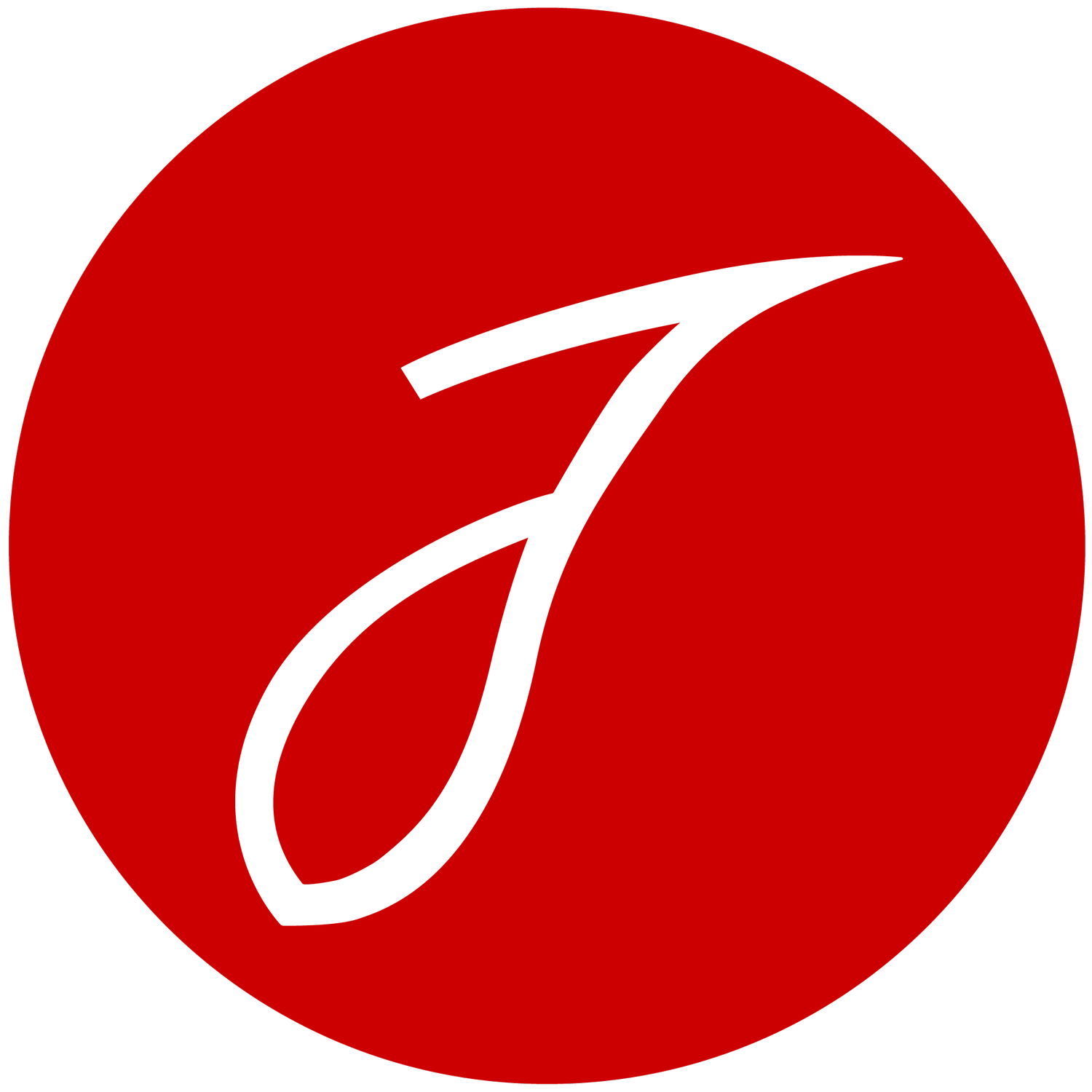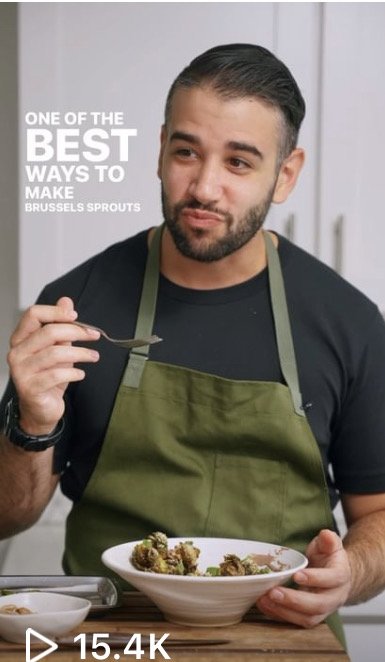My 2023 Playbook - Lessons Learned, Tips, Favorites, and Goals for the Year Ahead
Listen Audio Only:
(or, scroll down to read and find links)
Watch on YouTube:
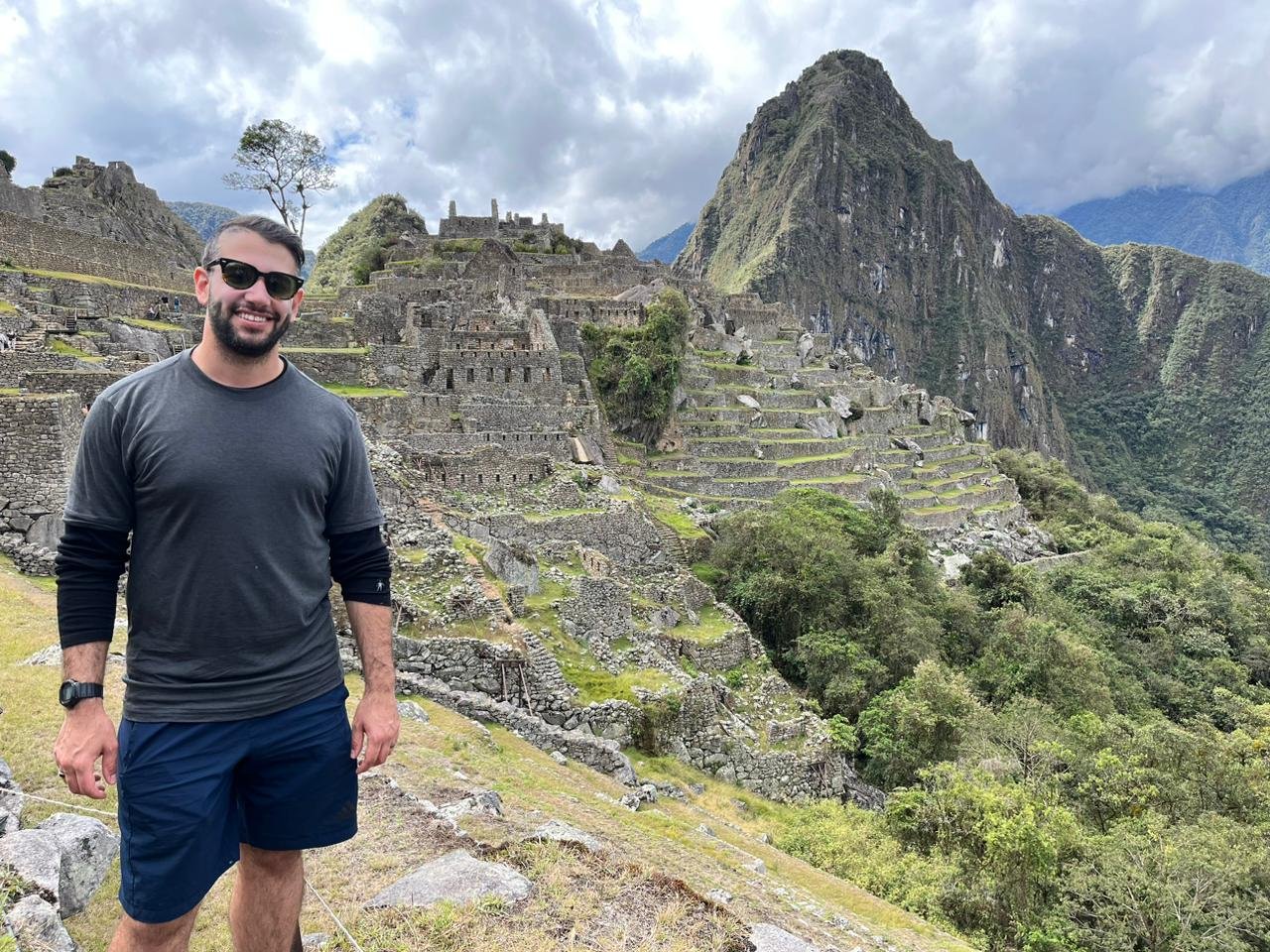
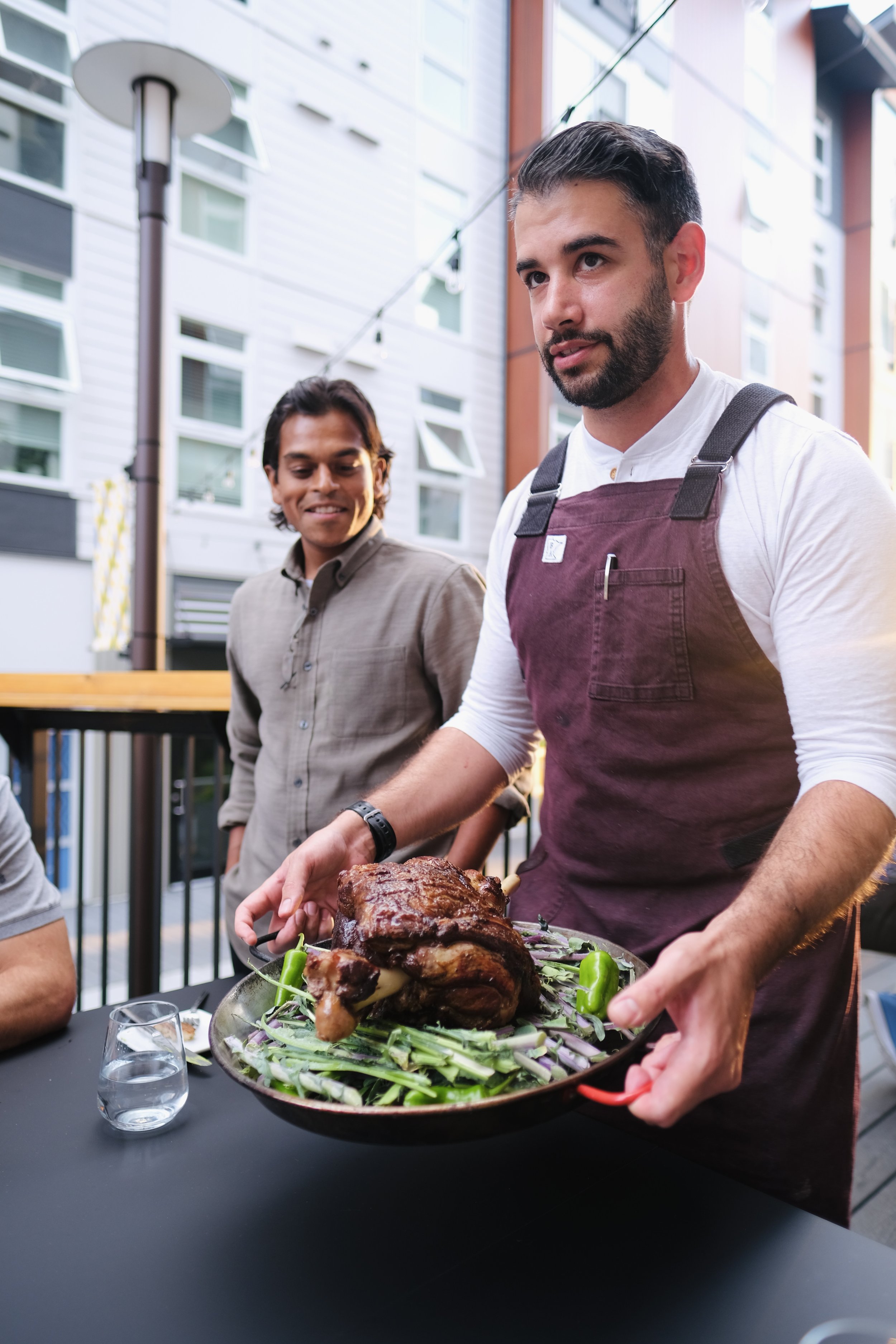
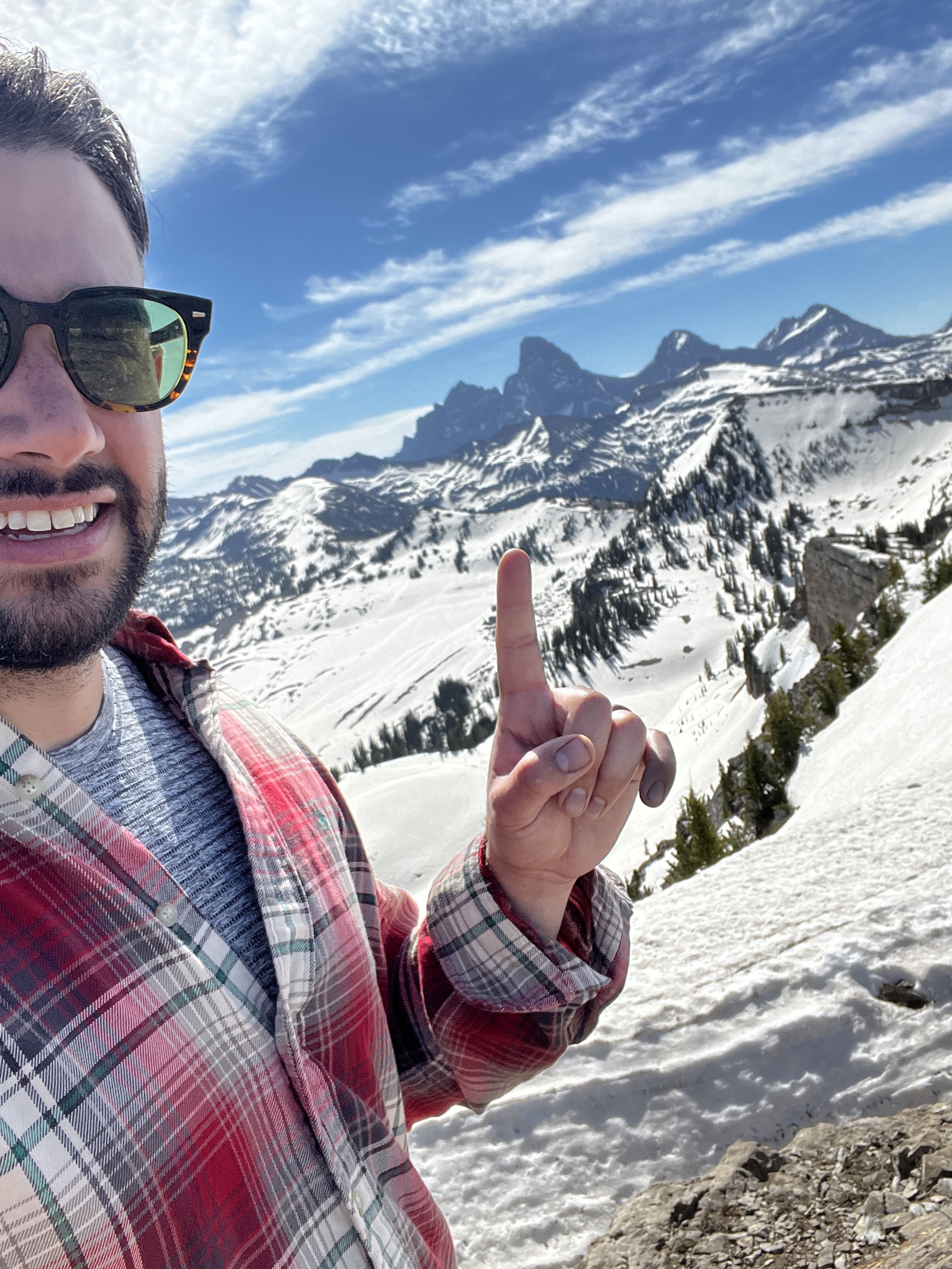


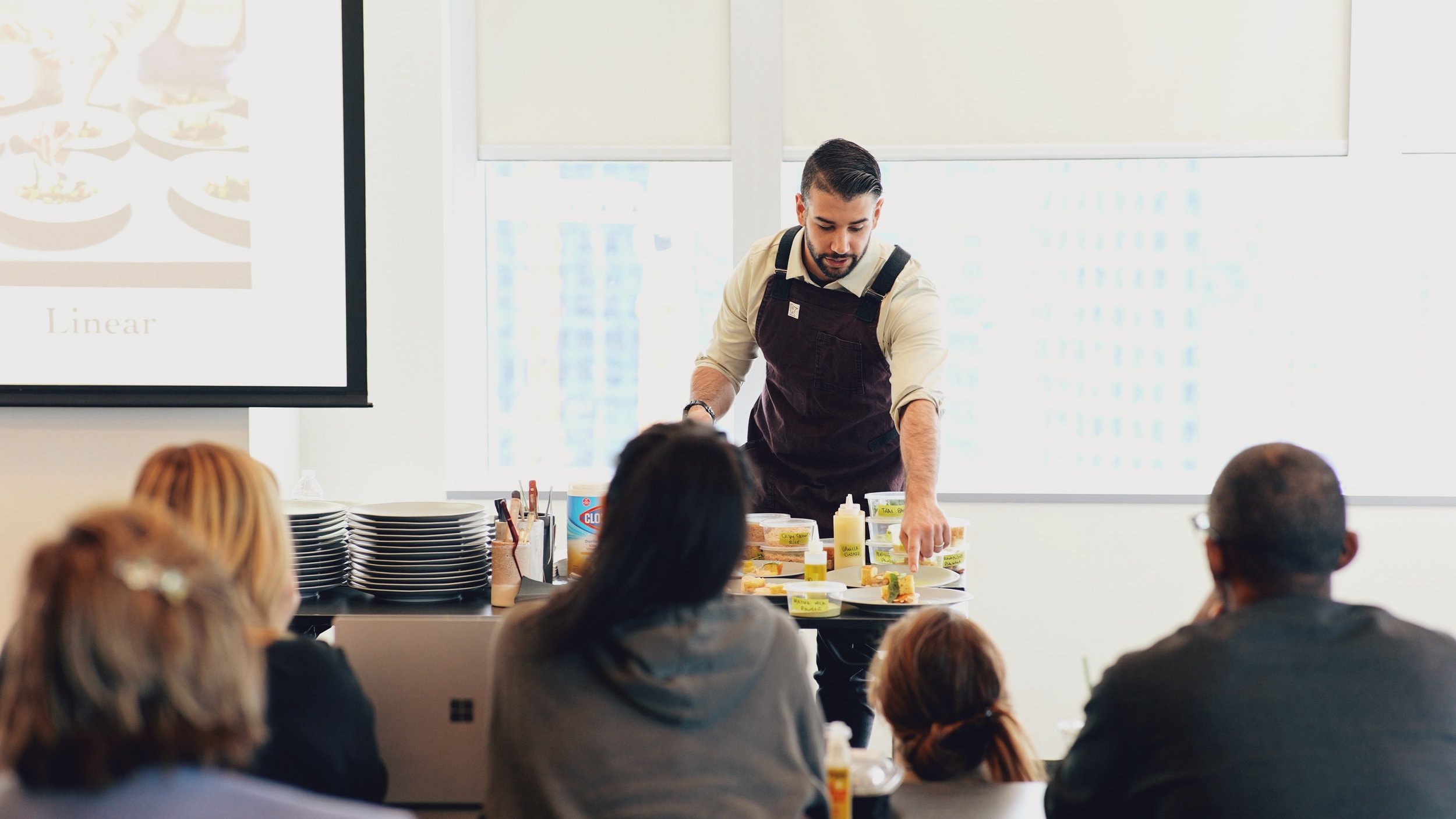
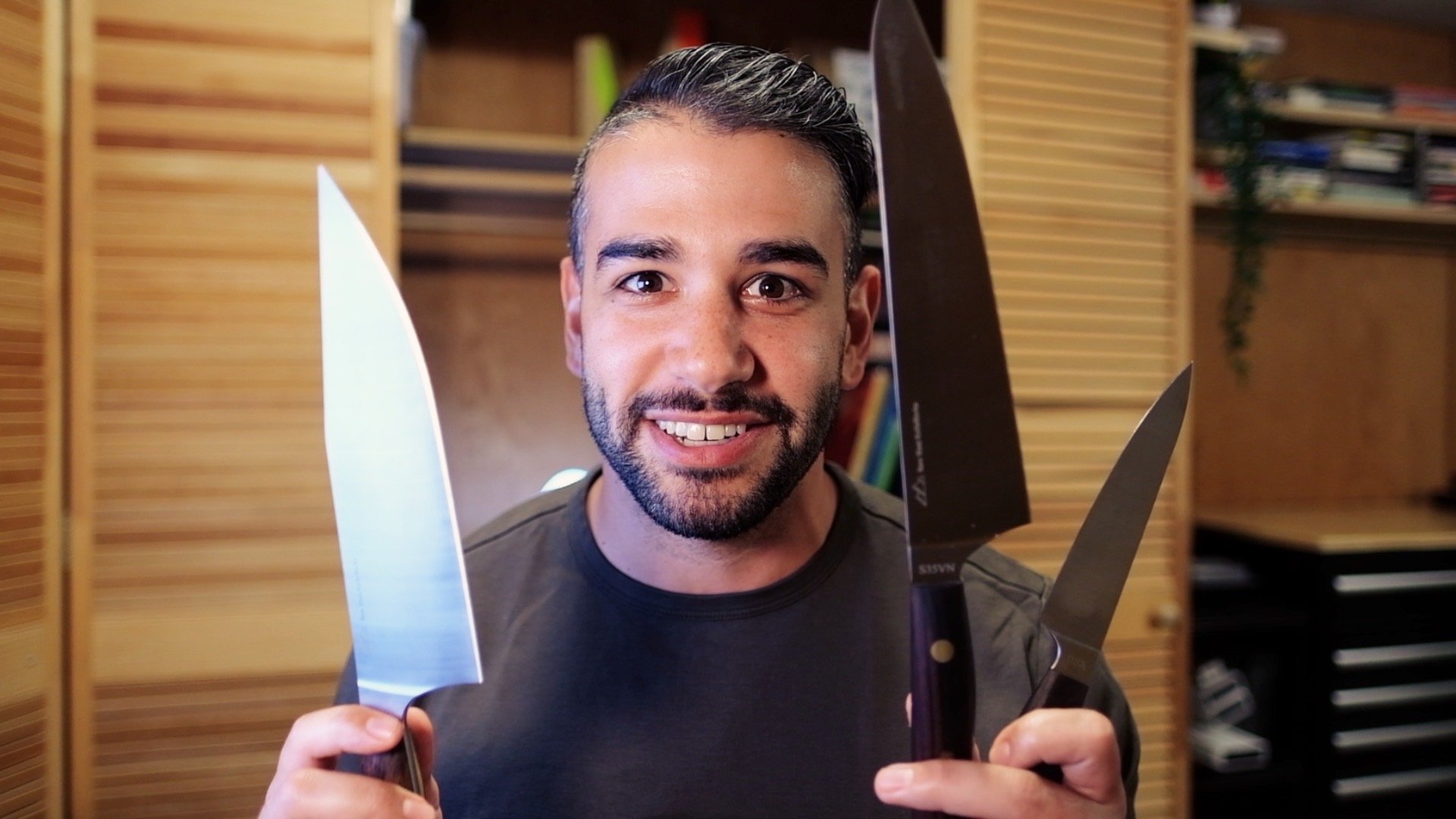
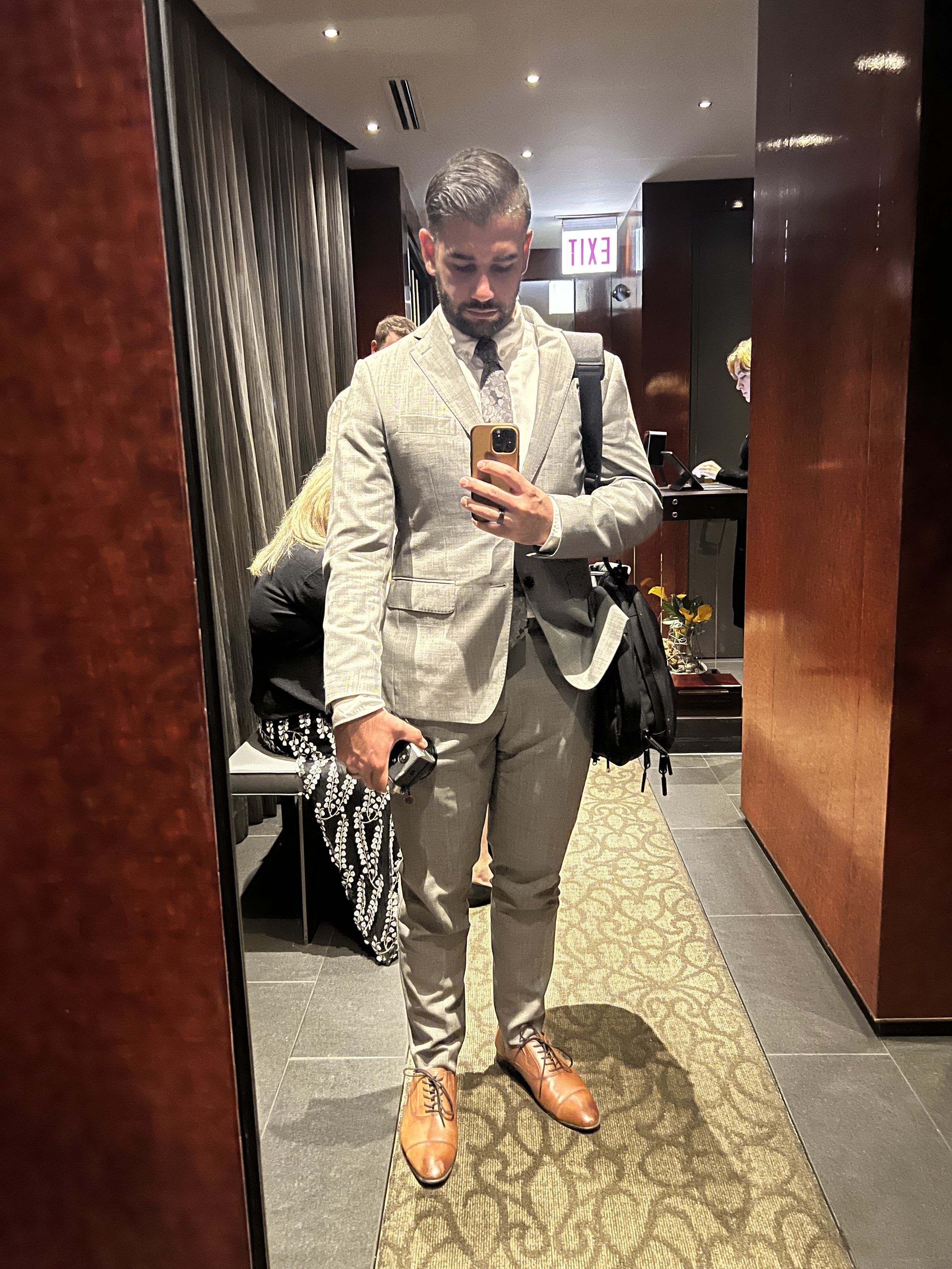
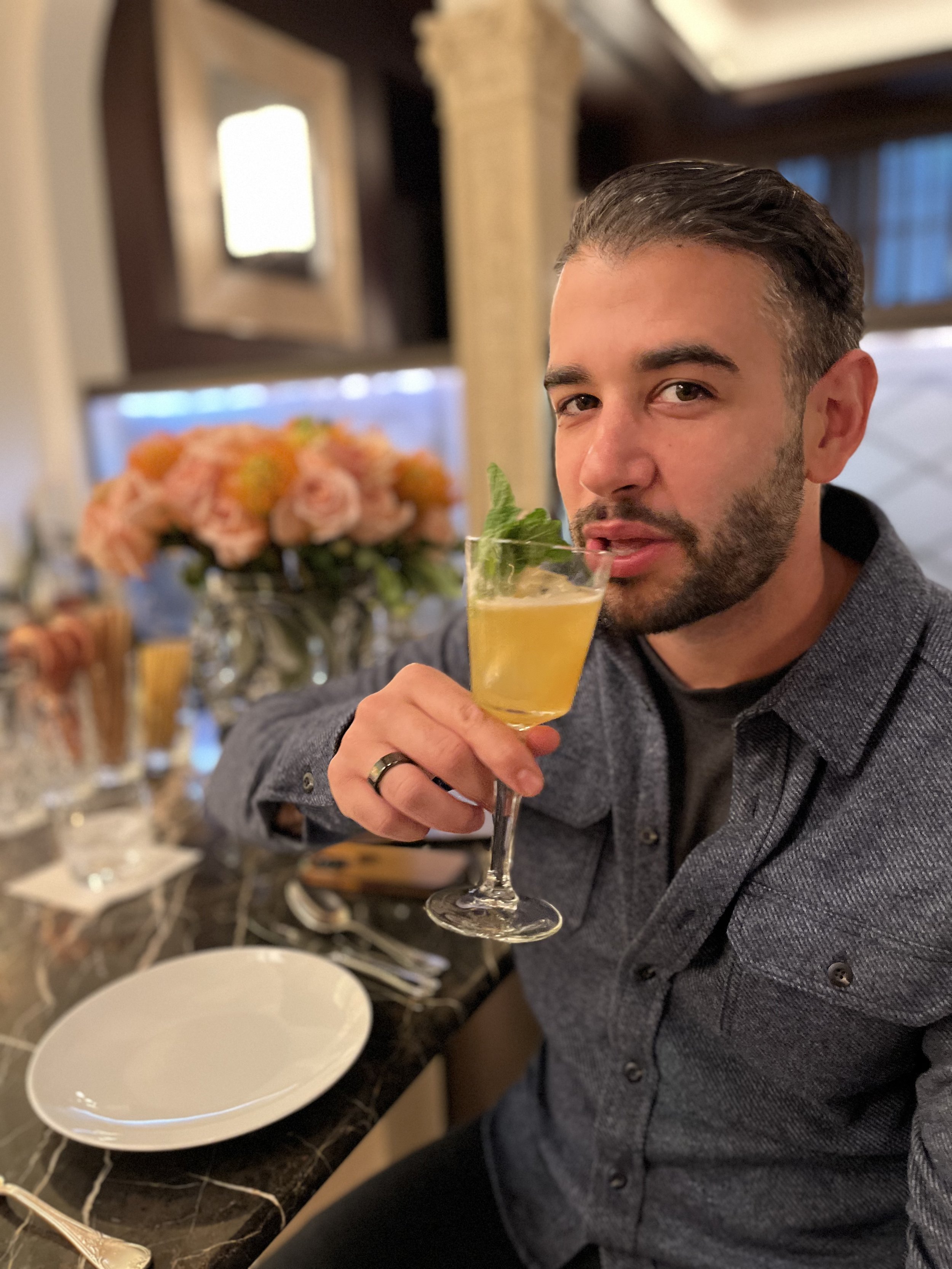
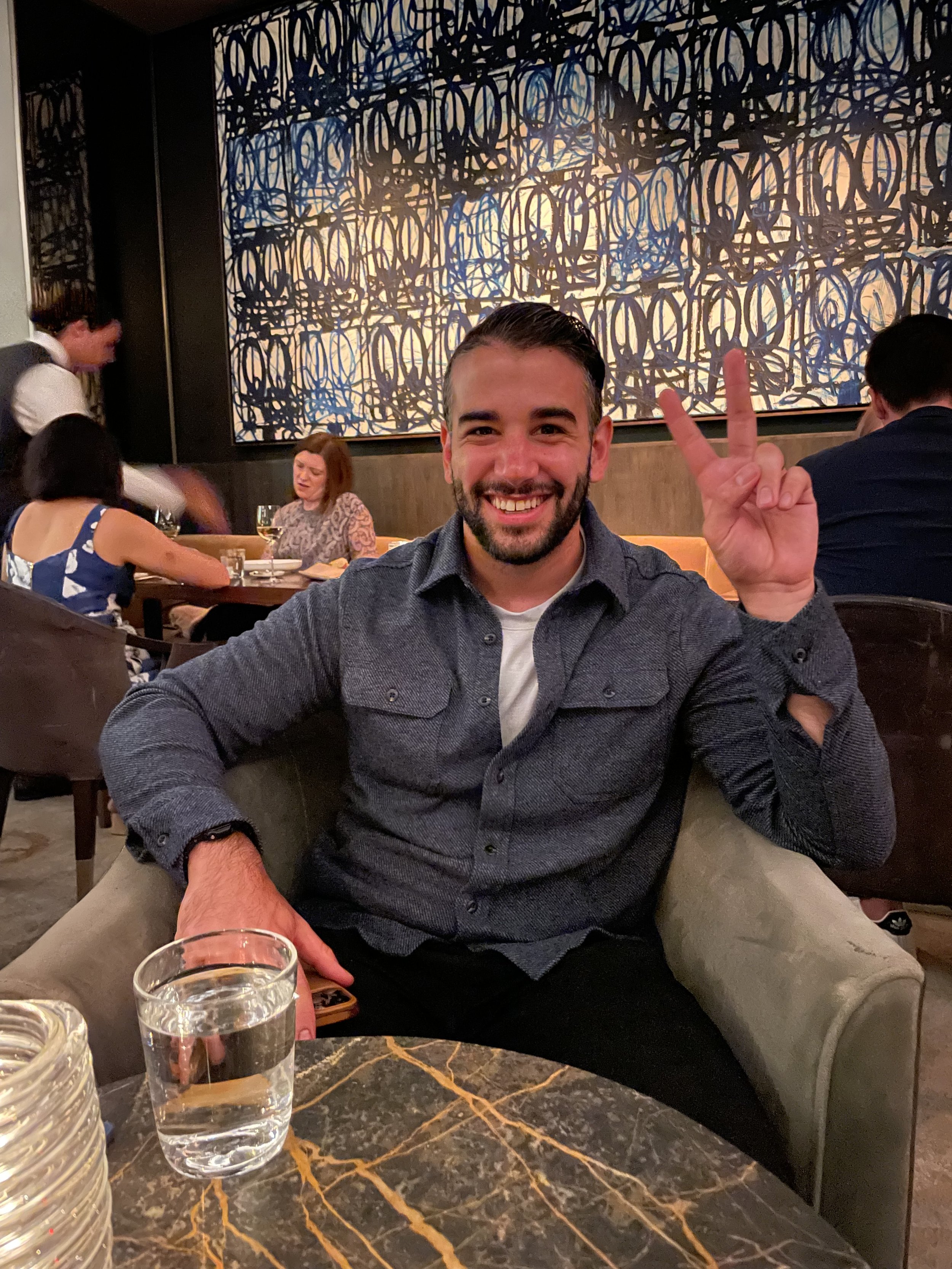


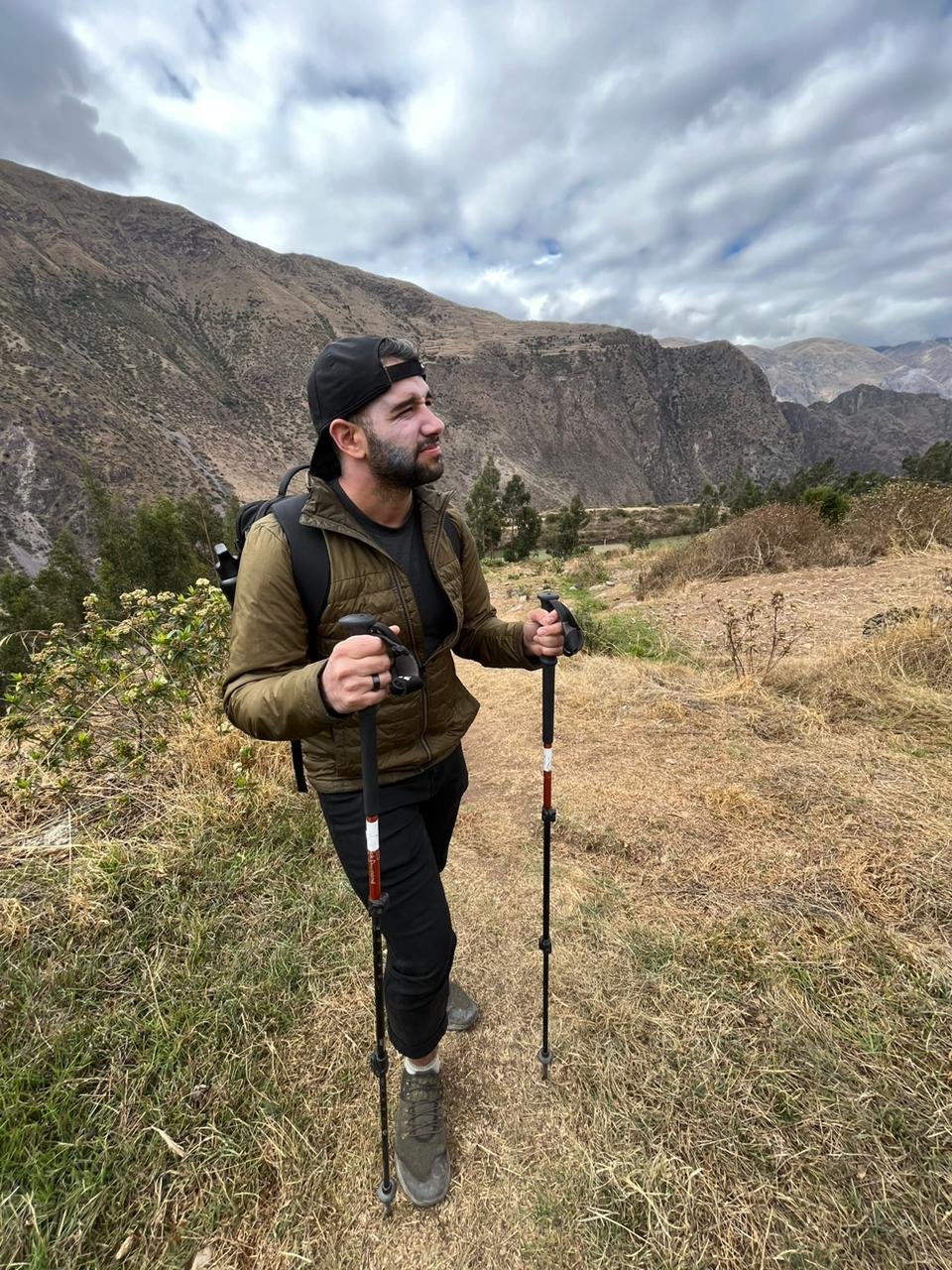

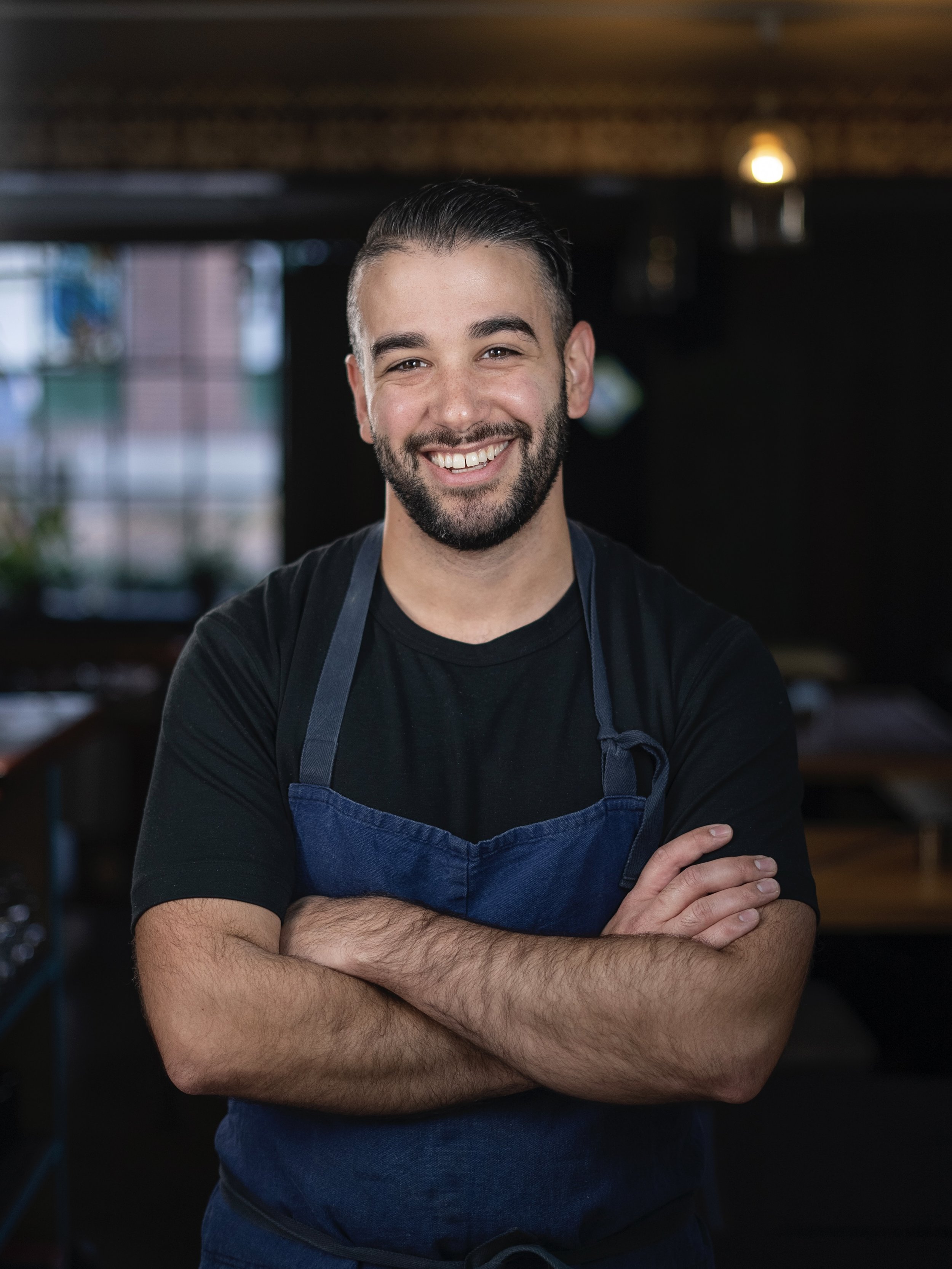
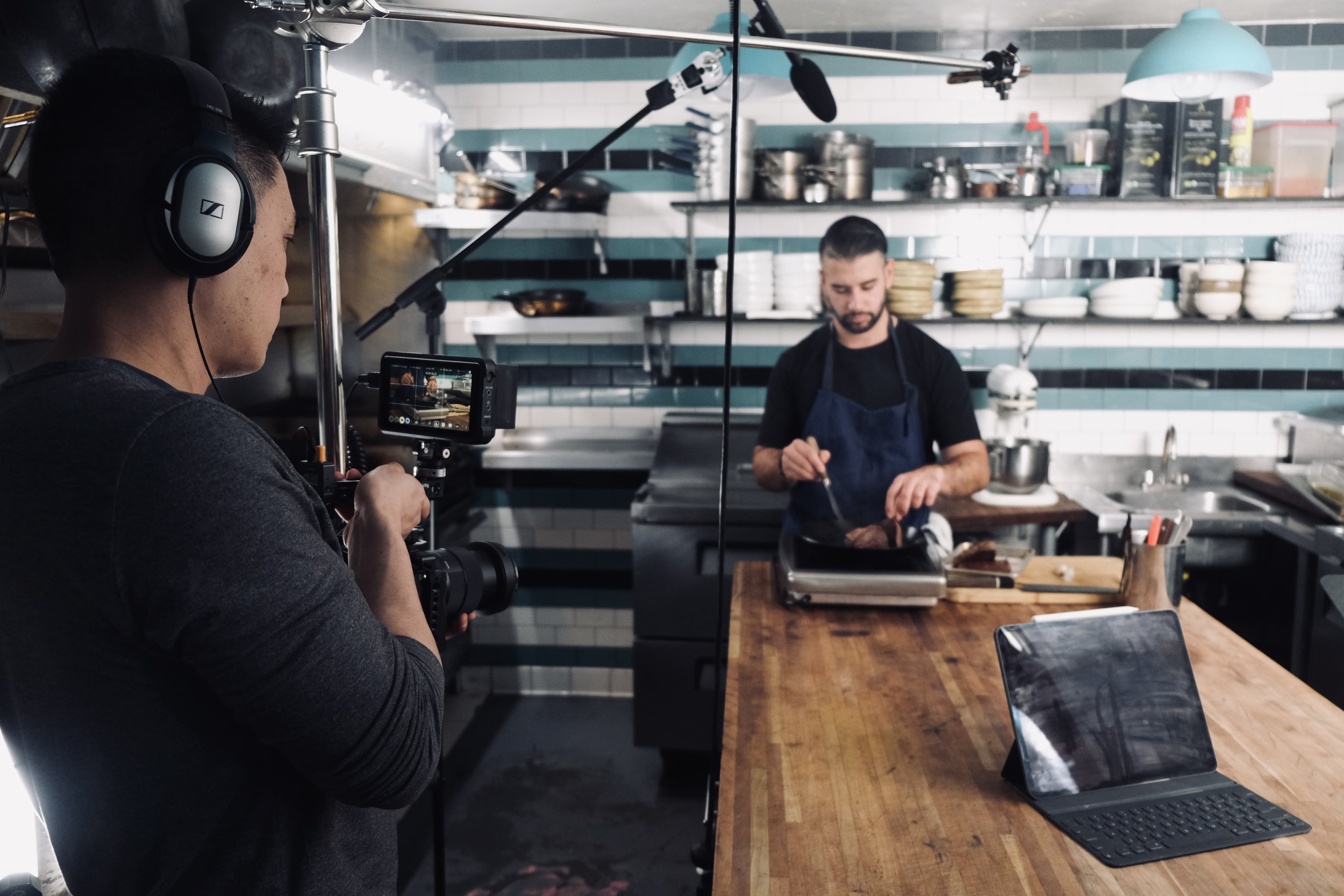

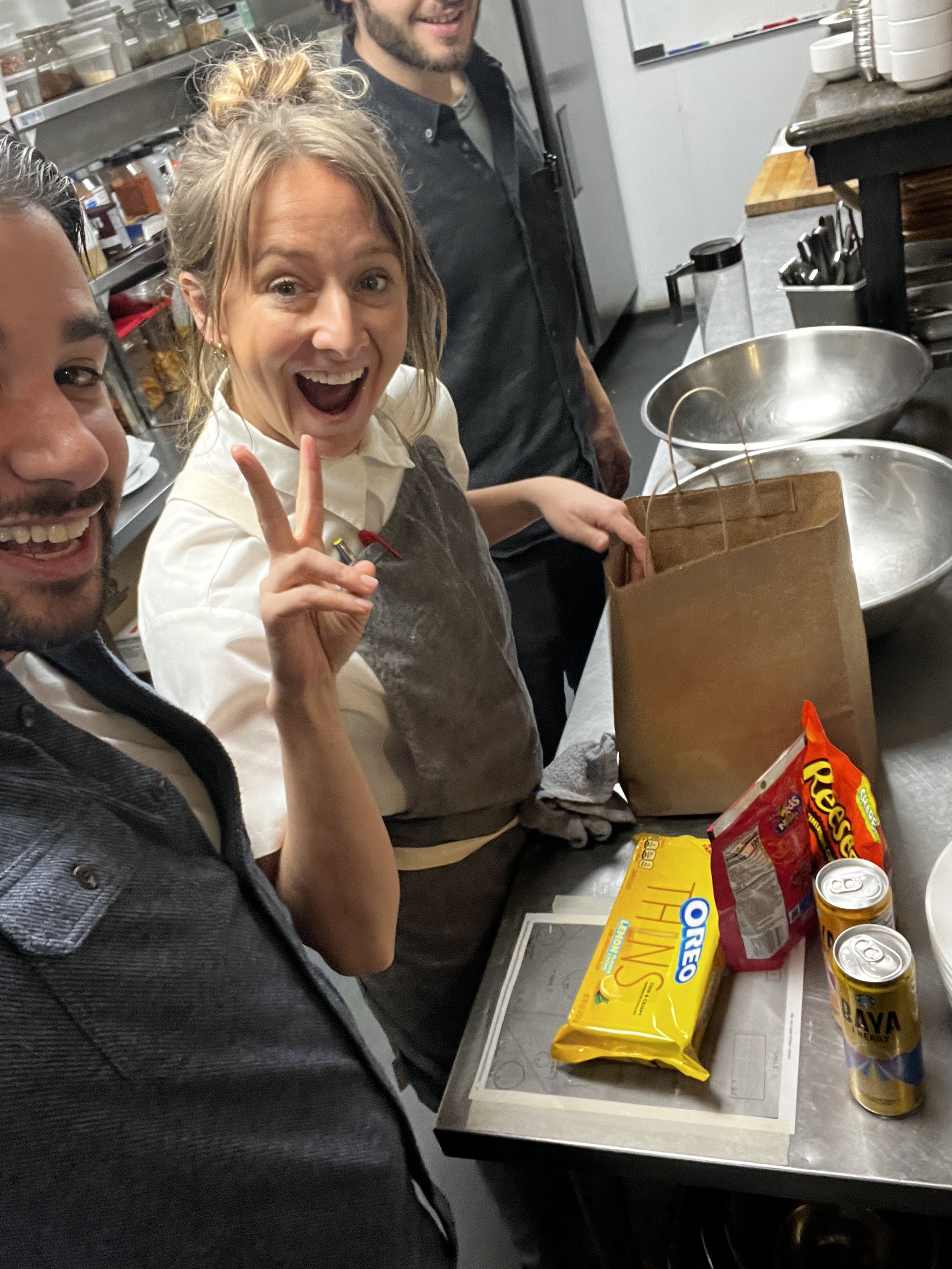
It’s a tardy publication this year, due to some exciting news that I’ll share in the “Family” section that I didn’t want to announce until I felt comfortable. If you want to check out previous editions, you can find them here.
Welcome to my annual account of lessons learned, hacks, favorites, and plans for the year ahead! If you’re new, instead of a yearly review looking back, I publish a Playbook with my plans looking forward.
Don’t get me wrong, I’ll gently reflect on previous years’ goals, especially if it points out changes in my habits, routines, or learnings that I think are valuable to share; but I find this to be more productive than resolutions.
The idea being: you can back-track through previous Playbooks and identify a sense of what I did to accomplish what I achieved.
Inside each Playbook, I focus more on what I plan to do instead of what I plan on achieving, and you’ll find specific headers under split categories like Health, Wealth, Work, Family, and Miscellaneous. Happy reading!
Health
I proclaimed in 2022’s Playbook that I was in the best shape of my life, and that trend continues into 2023.
Strength Training
I’ve never felt more capable when it comes to strength training, and that’s been due to a few changes I made in the 2022.
The first change was environmental. With the move to our new house last year, I didn’t have convenient access to a gym with barbells.
Considering I wanted to keep my exercise habit, I enrolled in a Planet Fitness (a non-barbell gym, mostly outfitted with machines) and convinced myself that I could continue to maintain my strength.
I was incredibly wrong.
After about 4 months in the new gym, the rust started to develop on my compound lifts and all of my progress deteriorated.
There’s since been a new gym that’s opened that has everything I need, barbells included (there’s also an extra ‘CrossFit-style’ section called the Champion’s Room, but it costs extra and includes classes that I don’t really need).
Even though I can’t walk to it anymore, I’ve paid for a full year’s membership (introducing sunk-cost-bias) and worked time into my day to ensure that I can get high-quality training in every week.
The second change is in relation to style of training - I switched up my programming from full-body to the “bro-split” of Push-Pull-Legs (PPL) again, at least for the first half of this year.
To avoid having one workout program for each day, I’ve stolen an idea from Jeff Nippard where I’ve created 2 programs per split (I effectively have 6 separate routines, 2 for each of the 3 splits).
For example, instead of having to cram every “Push” exercise into one all-encompassing day, I divvy them up into 2 Push Days, which keeps each session focused, and adds a really engaging amount of variety.
One tweak I’ve incorporated is to acknowledge the amount of posterior chain contribution to the deadlift, so I deadlift on my Pull Days, which I find to be pretty contrary to most fitness influencers out there.
I actually get pretty bored with pull ups, bicep curls and rows on Pull Days, so having a deadlift day as part of that routine gives me something to look forward to. I’d also argue that keeping Leg Days exclusively squat focused has contributed to the progress I’ve seen on that lift this year.
A fantastic “hack” from Dr. Andrew Huberman is to do your leg day first when you start this type of programming. Legs typically require the longest recovery period, and if we’re being honest, it’s also the most dreaded day. Consider Leg Day as the frog you have to eat, and get it out of the way early.
That specific change has resulted in me hitting a new Squat PR this year (315lbs). My leg muscle definition is actually the result I’m the happiest with, considering I grew up with incredibly weak legs (poor development in my quads and hamstrings). To help support this, I’ve found incredible benefit in ATG Split Squats to help my knees remain healthy.
My bench press still needs work, and I’m planning on making that my key focus for 2023. If I can manage to hit a 275lb bench, that’ll put me in the 1000lb club (415lb deadlift, 315lb squat, 275lb bench) and that feels like a clean place to maintain for me (I weigh about 185lbs). I still fear that going above that is an injury waiting to happen, and I’m not interested in that trade-off.
To continue to maintain these numbers on respective lifts, I use a 1RM calculator to reverse-engineer what I need to be lifting in order to ensure that I can lower the weight on the bar but use higher volumes to make up the difference.
As an example, I recently hit 13 reps on a 315lb deadlift, which calculates to a 451lb 1RM. I was definitely sore the next day, but didn’t feel even remotely close to injury. It’s not a perfect system (and I don’t go around touting that I have a 450lb+ deadlift to anyone), but this allows me to be able to remain at some above-average numbers without winding up in physical therapy.
One last benefit I’ve seen from the PPL split is the decrease in overall workout time. When you’re hammering your legs or your back or your chest, it’s difficult to go for more than 40 minutes. My full-body training was nice because I could work out 2x a week and “maintain”, but it felt like I was just “going through the motions” and sessions would take 60-80 minutes. The 30-50% time savings combined with better results makes this a no-brainer for this training season.
I’ll be doing a shifting to chest-focused full-body split once I hit a 225lb bench press. This will basically consist of slotting in incline bench, barbell bench press and overhead pressing into the start of individual respective full-body programming so that I’m able to hit those exercises when I’m the freshest to help maximize gains and invest in my weakest muscle group.
Cardiovascular Health
My heart still worries me.
I had another cardiovascular-episode in my family happen this year, and it continues to be a concern that I plan on addressing in an upcoming visit with my doctor. Regardless of the outcome of that visit, there are two additions I plan to make to my lifestyle:
Sprints - I already do a 7-minute rowing sprint once a week as part of my “corrective” day at the gym. I want to incorporate one more “sprinting” session at the gym, and I want it to be on the treadmill. Considering I can track the numbers, I’ll be able to know that one week’s sprint is exactly the same to the next, and I won’t need to worry about the respiratory problems I experience in colder weather because all sessions will be inside. I’ll still do sprints outside during the summer months, but I don’t want to have a decrease in outdoor temperature become an excuse to stop doing this. See: Peter Attia’s insight on VO2 max if you want a deep dive here.
Zone 2 Cardio - Unless you’ve been living under a rock, this methodology took the world by storm in 2022. I haven’t done the work to identify my specific “Zones”, but my Oura ring allows for workout heart rate tracking. I plan on using a specific hilled route around my neighborhood to shoot for 3-4x, 60-minute walks per week. I’ll do that over time to monitor changes, mostly looking to see an increase in HRV and sleep quality. I also enjoy the lack of fatigue that comes from having good cardio on little moments in life like climbing a set of stairs, walking up a hill, or when carrying heavy stuff around. Once I adapt to this, I’ll plan to do 2-3x runs per week while maintaining that Zone 2 heart rate.
Considering I’m not overweight and don’t seem to have any issues with cholesterol, I plan on changing how I burn fuel versus changing the type of fuel I’m consuming. Even if my doctor shares that I have an issue, I’ll most likely ramp up my movement considering I love food too much to change that (at least right now).
Mobility
This has been the hardest habit to maintain for me.
I’ve written about mobility for the past 3 editions of this Playbook and virtually no progress has been made.
It lacks the numerical value of lifts, and so I become incredibly bored with stretching and progress towards flexibility goals.
I also don’t have any deeper “why” behind being able to touch my toes, considering it doesn’t affect my day-to-day life, make me look better in the mirror, or hold me back from achieving any other goals.
However, with an increase in leg strength comes a motivation to want to “round out” that body part, and I believe a slight tweak in training schedule and a reintroduction to a night-time habit will be the fixes.
A typical week might look like this:
Sunday - Leg Day
Monday - Push Day, Treadmill Sprints
Tuesday - Yoga/Tennis, 60-Min Walk
Wednesday - Pull Day, 60-Min Walk
Thursday - Yoga/Tennis, 60-Min Walk
Friday - Push Day, 60-Min Walk
Saturday - Corrective Day, Rowing Sprint (on a machine)
This brings back my yoga practice, and effectively ensures I’ll be working out every day. Notice, also, that I’ll be upping my “Push” volume every week, to account for my bench press goals. Considering I have multiples of Push & Yoga Days, if something in my schedule happens to disrupt a day, those will be the first to go, ensuring that I still hit those main pillars.
Tennis functions as a fantastic source of cardio for me, and I have a great partner to play with. Considering he texts me when he has availability to play, it helps me look forward to those types of workouts because I want to win!
I should also add that I include Jefferson Curls into both one Leg Day and on my Corrective Day, which ensures that I’m strengthening while increasing range of motion, and the two will ideally play off one another to ultimately improve my hamstrings.
Lastly, I’m re-incorporating the night time stretching routine. I’ve been a bit too stimulated at night time (mostly social media and video games on my phone), and while it hasn’t caused any issues falling asleep, I know my “sleep hygiene” could be better. The goal is to throw on the blue-light blocking glasses at 9pm and stretch for about 10-15 minutes. I’ve placed my yoga mat in a place that’s always “out” so that my environment is a constant reminder.
This combination of yoga and increased stretching volume makes it hard to believe that I won’t feel remarkably different at the end of the year.
It’s just on me to ensure that I do the work.
Health Optimizations
These are nice-to-haves if I’m able to see results from them by the end of the year. I’m not making these key priorities, but I’m also not ignoring them:
Visible Abs - I know I said I wasn’t overweight (which is true), but I wouldn’t mind losing ~10lbs this year. I realize a large contributor to my leg and arm size this year was a calorie surplus, but I’m craving a six-pack. It’s not a huge deal breaker if it doesn’t happen, but I’m reasonably confident that the combination of higher muscle mass and increased walking will put me in enough of a calorie deficit to make it happen.
Grip Strength - After having elderly family members suffer from falls this year, I’m seeing the benefit to grip strength in day-to-day life (and a lot of my lifts benefit from it too). I’m incorporating hanging in my Corrective Day, and the goal is to hit 2 minutes. Wearing the gloves I covered in last year’s Playbook has been a huge help here, considering my hand calluses are actually the most painful part of hanging and cause me to give out first.
Meditation - I feel like I’ve come “full circle” on meditation over the past 5 years. From experimenting with different apps and methods (confused), to being dogmatically committed to the habit (dependent), to foregoing the practice all together (”I don’t need this”), I’m now confidently in a productive relationship with meditation. The sweet spot for me is 20 minutes, on the Waking Up app, every day in the morning right after I make my coffee. It’s incredibly similar to stretching for me, in that I don’t see it manifest in any specific moment, but I know that doing it repeatedly gives me massive benefit over time in unseen ways. I’m less reactive, less prone to anxiety, and more present.
Some insights that have really resonated with me:
You are not your thoughts - they simply arise in consciousness. This has profound implications in self-identification with what happens to you.
Value the present - most of what people claim to “want” is just increased level of presence in their own life. People seek out “peak experiences”, substance-induced states or an “escape” just so that they can feel fully absorbed in what’s happening to them. I get that experience every morning, and getting to “taste” it so often makes it much more likely that I’ll be able to settle into that state more often during other moments in my life.
Labelling thoughts or feelings as “bad” isn’t useful - this has been touched on by multiple folks, and the way that Sam Harris guides me through my relationship with my thoughts has helped immensely. The first one that comes to mind is Josh Waitzkin’s story about the fact that he doesn’t speak about the weather in “good” or “bad” when speaking with his kids. Why is rain “bad”? It’s just rain, and there are fun ways to spend a rainy day, too. Additionally, I’m reminded of Alex Hormozi sharing this:
Work
My work went through some ups and downs in 2022, but the biggest goal I had was to prove to myself that I could achieve a 6-figure business again.
The last time I did it was in event production, with a business partner (who was responsible for a lot of the sales), numerous employees, and not a lot of leverage via media or software. I flailed about a bit in 2022, but I managed to over-shoot my goal, and I plan on streamlining and narrowing focus for 2023.
Compounding is Difficult to Comprehend
I’ve been publishing on the internet for over 6 years, and this was the first year when I finally felt like it was financially worth it.
The immense satisfaction from making work I’m proud of and the benefits of helping you folks has always been there, but I’ve always been frustrated at how much money I’ve made.
What came to fruition this year was the result of the next few bullet points, and if I’m being honest, I absolutely felt the quote from this graph at the start of this year.
Relationships Matter
I don’t know where the obsession with being “self-made” comes from, but I find it to be a massive fallacy.
In fact, I believe it’s actually playing on “hard mode” with no extra reward at the end. Your employees, vendors, customers, peers, contractors, acquaintances, mentors, critics, reviewers, family…everything contributes to your success.
You’d be better off fostering those relationships and leveraging them for greater opportunities, rather than trying to go it alone. I had a relationship I’ve been building for 12 years finally return financial benefit this year, and now that it’s finally happened, it’s actually less about the money than I thought!
Having the podcast is still one of the highest ROI uses of my time in terms of my professional relationships, and I’ll continue to do more interviews in 2023.
Building on that, a huge life hack for relationships is to consider how they impact your reputation. If you’re struggling with your reputation, the trick might not be more accolades, skills or time, but relationships that does the trick.
Aim High, Remove the Ceiling
Everyone’s heard the “shoot for the moon, if you miss you’ll land among the stars” anecdote, but what happens if you hit the moon? Are you just gonna stop?
In 2022 I learned the value of both aiming high AND making it possible to exceed your expectations. I hadn’t quite understood the hype around the “Think and Grow Rich” mindset until this year. I figured, “of course we all want to make more money”, and the idea around just “thinking” my way into my goals is just about the least interesting mindset you can offer someone like me.
What I realized is that I was experiencing a more exaggerated version of the thermostat problem.
If you’ve got the thermostat in your house set to 68F, lower temperatures kick on the furnace, and higher ones shut it off.
My money thermostat was set somewhere around $5,000/month, and that was how I spent the first 6 months of this year. This was largely a belief problem, more than a character trait or skill problem, and this change will carry me into the new year.
It truly changed only when I asked myself: what would making $20K in a month look like? That’s what I was able to hit, consistently, for the last 3 months of the year (even hitting $25K+ in November). I’m taking this learning into 2023 with a $50,000 month as a goal 🚀
Go Beyond “No”
After years of saying yes (see: my “portfolio of opportunities” rant in last year’s Playbook), I started to say no to smaller opportunities that I previously would’ve agreed to. I found myself consistently saying, “I’m not getting to $20k this month with this $750 opportunity” throughout 2022…so I spent that time chasing after a $5K or $10K thing, instead.
Again, this is a slight shift to what I wrote about in 2019, and it makes all the difference. If saying “no” was what we wanted to optimize for, I’d just setup an autoresponder that declined every email. The magic isn’t in saying “no” itself, it’s what it allows you to do afterwards with the space you’ve made available that really drives outsized returns.
Said differently, it’s more about quality and nuanced decision making over a binary “rule”. Don’t get me wrong, seasons of binary “no’s” can be helpful, but for me right now, navigating complex decision making over long time horizons is what’s required.
Stack Skills Over Experience
I also finally saw the result of the seemingly-unrelated progressions I’ve been building over the past 5 years. I’m reminded of the advice from Scott Adams of combining skills from different disciplines to become truly unique.
I feel world-class at cooking, creating content, negotiating, and teaching in a way where I can make orders of magnitude more than if I only used one of those skills.
Chase Jarvis shares, “Forget better or even different. Think ‘only’.”
Kevin Kelly says, “Don’t aim to be the best at something, aim to be the only”.
However, it’s the non-obvious route to take.
For me, skill stacking is more valuable than experience because it goes against conventional wisdom.
“Got good at cooking? Keep doing that thing.”
“Found a sweet gig video editing? Awesome, do more of that.”
It’s really hard (and not immediately beneficial) to pursue new skill paths. By definition, you’re giving up time that you could be spending “getting more experience” at the thing you’re already good at (or have opportunities in). But what’s on the other side of that, if you can manage to do it right, is a true 1+1 = 3 outcome.
Nearly all of my high-income opportunities this year came from the fact that I’m multi-disciplinary.
Also, notice: I didn’t say forego experience. If you have no experience, obviously that becomes a necessary to-do item. But given the choice between spending time to squeak out marginal additional “experience” in something you already feel well-versed in and stacking another skill on top of it, I plan on leaning into the latter in 2023.
Segment for Identity
There might’ve been some confusion when I launched Repertoire last year. I’ll admit, I didn’t have a clear plan. At least in these early days, my content and Repertoire’s content appears to be one-and-the-same.
But use this piece of content as an example - I reserve my talks about health, entrepreneurship, money, and family for this one occasion per year.
To me, the chef-focused audience that I’ve built over the past 6 years is more focused on techniques, skills and professional experience. It wouldn’t make sense for me to publish this Playbook on Repertoire’s channels, and that’s how I know I’ve done something right.
To lean into this, I separated them via the re-branding that happened in 2022 across the podcast, the newsletter and a new website. However, I failed to lean into more publishing on my own accounts, which I’ll look forward to changing in 2023.
This also comes with a bit of a shift in identity for myself. I’m beginning to shed the “chef” label, and step more into the entrepreneur/founder title for myself.
If I’m being honest, it’s a really challenging transition and I’m suffering from all of the associated side effects. Sunk cost bias, imposter syndrome, and doubt all plague me, and I have to continually remind myself that “this is what hard feels like” in order to ensure that I stick with it and don’t give up.
The reason I felt so lost in previous years is because I had the skills, but was missing the entrepreneurial beliefs to chart a path towards business success of my own. I plan to trust in the deep work I’ve done over the past few years to outline this idea, and rely on consistency and “doing the boring work” to carry me into this next chapter.
This quote comes to mind: “we need to be reminded more than we need to be taught”.
Multiple Eggs
Coming out of 2021, I was pretty beat down and incredibly uncertain for the future. There was every reason for me to throw in the towel and go get a job in a kitchen. I had multiple “eggs” in different baskets, but none of them were producing enough to sustain me in a consistent way. I focused, and created systems behind each and every one of those eggs so that I could not just grow them, but not rely on any single one.
Here’s an approximation of how my income broke down in 2022:
Consulting: 15%
Sponsorships: 25%
Cooking (private dinners, cooking classes, etc): 30%
Course Sales & Community Membership: 15%
Coaching: 15%
This becomes increasingly key as multiple uncertainties become more likely:
With the economy in a turbulent moment, clients that would’ve booked dinners reduce budgets or downsize their teams so there are less guests at a dinner.
Brands that would’ve sponsored end up doing the same; with less marketing spend, the contracts decrease in scope and the ones who were previously interested are no longer pursuing partnerships
Companies that could afford consulting are no longer seeking those types of services
With wife and I thinking about kids in the next few years, I’m not sure I want to setup a complex and overhead-heavy event company again that relies on me to be the face of the operation
Notice that coaching, community, and courses (all of Repertoire’s offerings) aren’t heavily affected by nearly any of this.
I’m not naive to the fact that certain audience members will stop purchasing or pause their membership if their income is affected; but in that type of environment, by definition, there’s a large influx of folks that are interested in making more money! I’m hedged in either direction.
However, you might notice that I still have other “eggs” as part of my basket. This is because I want the flexibility to have products and services fail until they reach product-market-fit. I don’t have an investor breathing down my neck.
I’m also attempting something incredibly ambitious with the types of products I’m creating. Each one broken down here:
Courses - most hospitality courses are incredibly stale and not adaptable. You watch someone make something on screen and maybe get a recipe with it. The Masterclass you watched over the weekend isn’t gonna save you at 7pm on a Saturday night. Not to mention, that same type of content is available, in mass, for free, on YouTube and in short-form platforms like Instagram and TikTok. Why would I pay someone to watch a chef make salmon en papillote?
Community - most hospitality communities are painfully unmoderated, cringe-y and full of complaining. I’ve never left the Kitchen Confidential sub-Reddit “more inspired” or “proud of the industry”. In fact, I never identified with that community, and so I’m building something different. Repertoire’s is full of weekly challenges, spaces that I think are positive and productive, and live sessions led by me!
Coaching - most clients (90%+) who end up booking coaching with me share that this is the first coaching they’ve ever pursued. I didn’t even know of a single person offering this type of service when I was in kitchens full time, and I’m overjoyed to see the success of clients over the past year of really digging in with folks.
I’ve set targets for each category for 2023, and if hit, will allow me to re-invest massively in 2024 for some even more exciting benefits for members and students. To ensure I don’t pursue any short-term behavior with any of these 3, effectively axing the cooking for 2023, and rely on supplementary income from sponsors and consulting gigs. It’s not the cleanest way to do it, but it allows me to remain bootstrapped, flexible and adaptable.
I also want to spend a quick second talking about cooking events. They made up a not-insignificant amount of my income in 2022 and it’s completely in line with my background, so why stop doing them?
I don’t nearly have the infrastructure I used to when it comes to doing events. I don’t have a team anymore, no inventory of supplies, no commissary kitchen to prep out of, and every operational step needs to be generated from zero.
Said another way: it’s not a problem of not knowing how, but a problem of having no momentum. It would actually be easier if I had 5 events per month rather than 2 per quarter, because I could invest in the systems and resources to build momentum.
Value Isn’t Always Monetary
I mentioned negotiation as a skill that I feel world-class at. While I’ve still got room to grow and a lot to learn, I’ve learned that what really comprises negotiation is a cocktail of:
Human psychology
Underlying motivations
Incentives
Timing
Available “levers”
Decisions
Risk
Trust
…the list goes on.
During my time sitting through negotiations that Jade Leong (my old business partner in Voyager’s Table) would have with clients, I listened to exactly what language someone with a $20K, $50K and $100K budgets respond to…the follow up questions they’d ask…the expectations they’d bring…the level of execution required to back it up. I studied the emails, and really internalized the language.
I read Never Split the Difference, and learned even more about high-level negotiation. It’s a fascinating mix of “mystifyingly simple” and “wildly tangled and complex”.
There were several moments in 2022 where I saw the value in non-monetary pieces that would get brought into a negotiation. I plan on improving that “muscle” even more this year and seeking to listen, lean on relationships, and optimize for longevity over a “quick payday”.
Speaking of paydays, I also firmly believe that money isn’t always the best benefit to optimize for. Once I have “enough”, I’ll start asking for things that money can’t buy (examples: access, opportunities, partnerships, collaborations, etc). For me, operating in this way ends up being much more fun and simultaneously made me feel like a better entrepreneur in the process.
B2B and B2C
I had to come to a harsh realization about Repertoire as a business in 2022. For those that don’t know, I wanted to model a lot of what Chris Do has done at The Futur for this business.
What I failed to realize is that he can be so successful in B2C because of the fact that most graphic designers, illustrators and content creators are solo. Those that are looking for skill development are typically on their own, not working for large graphic design firms. Some of them might even be the only member of their department in larger organization.
Contrast that with hospitality, where nearly all of us gain a majority of our skills through working in teams, whether that’s at a hotel, restaurant, bakery, bar or catering company. Instead of looking at this as a negative, I now see an opportunity.
With the larger macro-economic environment driving wages up, most businesses are now experiencing labor as their highest expense. If I can help make staff more productive, stay for longer, and be happier in the process, I see that as an opportunity.
All of Repertoire’s offerings will still be available for individuals, but the real unlock in 2023 will be to focus on B2B revenue. This will require studying of some of the great professional development businesses, and continuing to lean into the other lessons discussed in this playbook.
On the B2C side, we’ll be introducing even more courses, an affiliate program, more robust email marketing, and higher quality content for organic audience growth to achieve our goals.
After that’s achieved, I plan on combining the two via in-person experiences like workshops, classes, and even going as far as accreditation for specific hospitality skills.
Product >
The best way to get someone to buy your thing is to have it happen by word of mouth.
You, the business, didn’t have to spend any money, time, or resources to get a new customer - it’s pretty magical.
On top of that, it’s quadratic. 1 becomes 2, becomes 4, becomes 8, becomes 16…it balloons pretty quickly.
However, if no one’s giving you word-of-mouth business, you start to consider marketing.
If you’re having trouble marketing, you start to consider sales strategies.
So if we know all of this to be true…wouldn’t it make sense to focus on getting the product to be so good that people felt compelled to share it?
This belief change, largely inspired by Naval, Gary Vee, Mr. Beast, Alex Hormozi, and others, has completely shifted how I approach my work.
I started to see why I love product reviews so much - because I have a real fondness for great product design and get immense value from the products in my life that I love.
And it also hit me really hard when I could trace back every “flub” or “failure” after my entrepreneurial journey started about 6 years ago to product-related reasons.
Lack of product (different “thing” every time).
Poor development of product.
No consistency in product.
Poor/no product-market-fit.
After this change in belief, it feels like the doors have been blown off, and I’m finally able to step into a builder role in 2023. It’s advice I wish I would’ve taken to heart much earlier.
Wealth
TL;DR, I smashed through my financial goals for 2022, with over $170K in revenue for the year. It seems silly to say, but it’s difficult to separate “Wealth” and “Work” for me right now, considering so much of my income generation is reliant on my work, and I work in service of generating income. That’s non-trivial, because in previous years, the separation between the two was detrimental to the goals that I had for myself.
This happened in a surprising way, and I’m taking a lot of lessons learned into 2023:
Gratitude
I mentioned that elusive “E” word. When you hear “enough”, it often conjures up goals of “slowing down”, “scaling things back”, or “resting on laurels”.
The paradox for me is that the desire for more keeps me going, but when I hit the goal, it doesn’t satisfy the underlying inadequacy. The fix? Gratitude.
I know, you’ve heard it a million times. But the real magic for me came when I found a process that fired off all the right neurons and dopamine receptors.
The worst possible gratitude practice, to me, is the: “every morning, write 3 things you’re grateful for”.
That would be like if a loved one sent you a text message every morning at 9am saying “I love you”. Sure, it’s nice the first week, but after that, it feels artificial and doesn’t hold any meaning.
To build in constraints, I can’t talk about nebulous concepts. “Family”, “shelter”, or “coffee” are off the table. It’s also a single line field in my Notion journaling prompt, so I can’t wax on forever.
Instead, I use gratitude on two time scales. Hyper-localized and micro, as well as forward-looking and macro.
Micro gratitude - this is focused on in-the-moment occurrences that give me that “huh” moment. The sun looked awesome when it was rising this morning. One of our house plants has a new leaf. I’m sore from squatting yesterday. I got to see a close friend last night for dinner.
Macro gratitude - this involves projecting myself into old-age, and asking, “what about right now would I kill to have when I’m 80?”. The gratitude nearly takes care of itself. My back doesn’t hurt. I can see clearly without glasses. My face doesn’t have any wrinkles (although I’ve already got some grey hairs). I can shower by myself. No one needs to help me up out of a chair.
So much of what ails us when it comes to happiness comes from comparison games. The old “comparison is the thief of joy” quote.
If you can get really good at just 1v1-ing your own subconscious, you can avoid the trappings that everyone else gets sucked into. This connects with the meditation habit.
Combine that with the Shane Parish (via Warren Buffet) mental model of being “Pleased but not Satisfied” when it comes to what you do, and you get to keep working & growing without sacrificing happiness along the way.
Low-Stress Investing
To me, this means decreasing the stress on my time as well as the stress on my mental capacity when it comes to investing my money.
In 2020-2021, like many folks, I leaned into active and intensive investment behavior. What I failed to realize was that the combination of:
The lack of a competitive advantage (I receive a lot of my information second hand and too late)
The size of my investable capital (even outsized returns wouldn’t eclipse me working more on my business)
The substantial amount of time remaining in my investment career (I could just let compounding do it’s magic and be pretty well off at retirement age)
…makes for active investing being a pretty poor use of my time. I’m talking 5-10 hours/week of research, stressing over when to place a trade, and comparing decisions.
The failure stemmed from getting caught up in the fallacy that I would be able to achieve a level of wealth that would cause me to stop working. Even as I write this, it’s incredibly therapeutic for me to admit that even if $10,000,000 showed up in my bank account tomorrow, I would still want to do what I’m doing now.
Therefore, I’ll need to just accept that this lesson cost me some time, and that I’ll need to just go back to principles shared in previous years’ Playbooks around automated, diversified, boring, and low-cost investing.
Once the business either has a liquidation event or achieves cashflow that allows for angel investment opportunities, I’ll deploy capital in a way that I’m able to influence through my audience, advising or network. Said differently, I took my eye off the ball too early in 2022, and should’ve stayed the course.
Family
This category, as promised, is near approaching my #1 priority, in a way that it hasn’t been in any other time in my life. If my 20’s was focused on work, I believe my 30’s will be remembered as a family-focused decade.
Paternal Excitement
I’m going to become a dad in 2023…
…although you might not hear much about it.
Considering I’ve had a lot of success in keeping my family off of social media, that trend continues into this year.
If you’re contemplating trying it out, I’ll admit to a bit of a strange feeling in the beginning, due to the fact that most folks use what they share as a proxy for what they care about.
After a while, though, I realized that I was really just drawing a clean line in the sand for what I chose to share online. I’m no less “myself” when I post things, but I keep it audience-focused, and I treat it like work.
There are plenty of tools available for sharing which are able to be private, not recorded, and direct, and that’s what I do with my family. Think: good ‘ol fashioned phone calls, group texts, FaceTime calls, or pictures that stay isolated to your camera roll.
This becomes even more valuable when I realized that I get to take really thoughtful photos and videos of my family and share them with just us (I know, shocking). This weirdly holds more weight than publishing it to thousands of strangers, and decreases expectation (and ability to draw a false equivalency) between how much I share online and how much I enjoyed the time or activity. Time spent with family is truly just for its own sake.
This is not to denigrate anyone who posts a lot about their family, much less makes a living off of it. But in the same way that my work has downsides that many “couldn’t stand” like straining fryer oil, raw chicken juice and exporting video analytics for a brand, the downsides that family-posting presents isn’t worth the upside to me.
Considering this upcoming change (becoming a parent) will cause such a massive shift in lifestyle, I’ll be following the “Work, Family, Scene…you can only pick two” mental model from Austin Kleon (popularized by Ryan Holiday). There probably won’t be many parties, social engagements, collaborations, or events that I’ll attend towards the tail end of 2023. 2024 will decrease even further.
However, I’m approaching this with more excitement than distress. There’s a reason there was never a “Scene” section of these Playbooks; in a weird way, I feel like I’ve been in this mode for the past 2-3 years already.
The Last Time
Since my wife’s side of the family has experienced some loss this year, I plan on frequently resurfacing a reminder that’s shared by Sam Harris and popularized in Four Thousand Weeks.
Sam shares that there will be a last time that you pick up your kid, and in that moment, you won’t know it. That hit me like a ton of bricks, and I couldn’t help but notice parallels in other areas, too.
I wonder how much of a lack of appreciation for family (and time spent with them) comes from a combination of a decrease in “stakes” and proximity bias When you literally have had 25 holiday seasons in a row with these people, it’s difficult to expect any different, and our brains are conditioned to expect more of the same.
In addition to the meditation practice (helping me be more present) and the gratitude habit (increasing my appreciation), another fun prompt I’ve added to my journaling is the “Story-Worthy Moment”. This comes from a book along the same lines, and it’s done as an aid in remembering your life.
We know that we’re story-loving creatures, and so crafting a story around a seemingly mundane event (getting lunch with your mom or visiting your grandpa for his birthday) can really help to layer these benefits together.
Plus, who knows if your story is literally documenting the last time that’ll ever happen in your life?
With the loss of my mom to cancer in mid-2023, this became strikingly clear. Considering I kept this in mind the last time I knew I was going to see her, it made for a zero-regret memory. It doesn’t change the grief that accompanies the loss, but I’m grateful that I heeded this advice.
Miscellaneous
If the preceding categories are my “rocks”, I’ve got a few pebbles and some sand that I plan on prioritizing in my life, as well as some reflections from the previous year.
Travel
NYC remains my favorite city to travel to, and I’ve setup professional relationships to reflect that. There’s no city where I can get the same mix of:
Phenomenal meals for TPC episodes
High-profile guests for the podcast
Meetings with hospitality-focused brands that become sponsors
…and I plan make at least one more trip there before the end of the year.
I’ll be traveling to Japan this year, making it my third visit to the country so far. Considering my wife and I had a wedding during COVID, I couldn’t have the bachelor party I would’ve wanted where I invited my groomsmen to a trip to Japan with me. I’ll be traveling there with the guy who was my best man, and we’re looking forward to a really fun trip.
Conferences are a travel life hack. I attended the Craft + Commerce Conference in Boise last year and intend on doing the same this year. I had a blast and met a lot of great people, which makes for a great excuse to get on the road in a season of my life where I’m less enticed by hostel-living and budget-style travel. I think I just got lucky in picking a great conference, but the time away from home, lessons from speakers, and environment of other progress-focused individuals makes it a great business expense for myself. I’ll look to limit my time at conferences and events to less than 4x per year, considering the trend I’ve seen in this post-COVID world where founders are seemingly distracted by the flurry of events that are now available to us again.
Reading
Audiobooks are where 80%+ of my reading happens these days, and it’s not as much as I would hope. I’ve leaned more towards YouTube and podcasts over reading over the past few months, but I’m at a bit of a critical mass with books that I’ve picked up and am excited about. To influence this behavior, I’ve added large-format widgets for Kindle and Audible on my home screen so that I’m more likely to click them than scroll social media.
I heard this great anecdote from Andrew Wilkinson: “If I could short founders who don’t read, I would.” I know that I perform better, connect ideas more easily and create better products when I read. To combat this, I need to avoid looking at it as a separate line item from work, and accept it as part of what makes me great at my job.
Pokémon Go
Collecting - I achieved a lot of my collection goals in 2022, through a shiny Trubbish, shiny Roggenrola (Community Day, but oh well), as well as a fully completed Pokédex of the first 3 generations. I hope to obtain a shiny Darkrai, shiny Riolu (and then Lucario), as well as the 3 Galarian legendary birds. If a shiny Phantump is released before the end of the year, I’d love to add that, too. My friend code is 6445 0536 5240, or, if you join or return to Pokémon GO using my referral code X2P8TDXJF, you’ll get a welcome reward, earn special bonus items, and more!
Battling - I’ve been using the GO Battle League as a way to decompress from work. It’s a performance, metrics-focused, multiplayer way for me to also find additional utility in a game that I already love. As I write this I’m nearly at Veteran level this season, and if I can use tips from certain YouTubers I follow, I’ll hope to hit Legend by end of the year in one of these upcoming seasons. I’m currently finding the most progress through a team of Bastiodon, Medicham and Trevenant.
AI and No-Code
If 2021 was the year of Web3, 2022 was the year of AI and No-Code tools. Considering 2023 seems to be accelerating even faster, so I’ve been attempting to stay ahead of the curve and use these tools in my day-to-day work. Here’s how I’m using them and what I plan on increasing my use:
MidJourney - We’re currently using this for custom art for The Repertoire Newsletter’s monologue. As I feel the need for more assets, I’ll either improve my prompting skills, use it as a framework for my own drafting in Figma or Canva, or present it as inspiration for a contractor to work with.
ChatGPT - We tried this for writing and didn’t like it. At least with GPT3, the results were incredibly “vanilla” and I don’t believe that my brands benefit from increased quantity of content. They’re still great for things like drafting recipes and summarizing podcast transcripts, though, so we continue to use them in areas that don’t benefit from human involvement.
Notion - Still my preferred second brain, made even better this year by AI. As I lean more into this season of identity change, I find myself wanting to be the best founder I can be. This means more systems, more organization, and more utilization of this tool that I’ve become a power-user of over the past few years.
AirTable - We used this tool extensively in the previous business I owned, and there are some curious and intriguing changes they’ve made to the product this past year that I want to utilize. The ability to automate workflows, showcase data, and crowd-source information makes it a really interesting platform for us with certain products we want to create.
Make.com - I’m so glad that all automation is now either silo’d to specific apps, or facilitated by this all-in-one solution. There’s no single part of my tech stack that isn’t possible to be integrated to Make, and it’s incredibly user friendly. To me, learning the fundamentals of API’s, JSON and most importantly, how to take my frequently done tasks and automate them, is an extremely welcome part of my work life.
Hacks and Favorites
I definitely had some fun and learned a lot in 2022, and a majority of that was made possible by these few purchases, habits, or tips that I always end these Playbooks with:
God of War: Ragnarok - such a fun, beautiful, and shockingly-fluid-to-play game that made it worth borrowing my friend’s PS5 to complete. Yes, I did all of the post-game challenges too!
Arc, the web browser from The Browser Company, has become a new favorite and I’ve got it installed on both laptop and mobile for surfing the web.
When traveling, choose accommodation that has a gym in it. For my training goals, I feel way better about time away from my normal routine.
All-Birds t-shirts - they have a great fit and they’re 30% merino wool. Believe it or not, I find that 100% merino shirts lack durability and fit poorly. These are a great mix, went on sale in 2022 so I picked up about 12 for ~$30 each, and you’ve seen me wearing them on almost all of my cooking videos from 2022 on Instagram.
Outlive by Peter Attia - I’d consider this required reading if you’re under the age of 60. I’ve mentioned Peter’s work in nearly every Playbook, and his advice has helped me immensely. Even though his advice on fasting has changed over the years, I find that his ability to change his mind on things and publicly share that makes me respect him even more. Considering I have parents that combine 3 of the major 4 causes of death (cancer, neurodegenerative disease and cardiovascular disease), I feel particularly drawn to any advice that can help aid in my health-span.
Alex Hormozi - I binged every single piece of content this man made in 2022. He’s helped me immensely in my beliefs on business, decreasing my emotionality, and upping my skills in sales.
I still love the All-In Podcast, and I’d argue it’s gotten even better since I last recommended it.
Dr. Kashey - If you liked Hormozi, you’d enjoy his close friend, who comes with an extra seasoning of dry humor.
My First Million Podcast - Some favorite episodes include (weirdly) the one with Martin Shkreli, this one with Nick Huber, and this episode breaking down Dave Ramsey’s empire. Sam and Shaan’s dynamic is hilarious and they cover topics I’m fascinated in learning more about, saving me a bunch of time in my week.
Modern Wisdom Podcast - Some favorites here include his second interview with Hormozi, the one with Goggins, this conversation with Gurwinder Bhogal, and this deep dive with Adam Lane Smith.
Finding a movie to work to - Tim Ferriss talks about playing the movie Fight Club during his writing sessions as a productivity hack. I can’t recall whether or not he had the audio on or not, but for me, a quick ~$20 purchase of the extended edition of The Lord of The Rings Trilogy has been huge. This helps me in a few ways:
Because I know what’s going to happen and I nearly have all of the audio memorized, I can just play the movie and I don’t get distracted to “see what’s gonna happen next”.
Considering I have the audio playing, it prevents me from browsing YouTube, so I often turn on one of the movies on our downstairs TV when I need to go through my inbox or respond to comments.
Because the movies are so long (3-4+ hours each), they last an entire working session. Also, since there are 3 movies, I have yet to experience any sort of fatigue on them (when I get tired of Two Towers, I switch to Fellowship, etc).
In Closing
One big change I’m making this year is keeping this Playbook at the top of my weekly review page (a habit I have using a template I made in Notion).
In years’ past, the only times I’d see a Playbook was when I was writing it, and then it would sit on the shelf until I’d review it while preparing for the next one. This year, I plan on giving it a skim every-so-often in order to make sure I stick to what’s outlined here.
Unlike previous editions, I have a place to send you if you want to continue to read more of my writings! I’ve got a newsletter I write every week, and if you enjoyed this, you’ll love it.
I wish you a healthy, safe, creative, fun, and profitable year ahead!
Have a good one,
👊Justin
